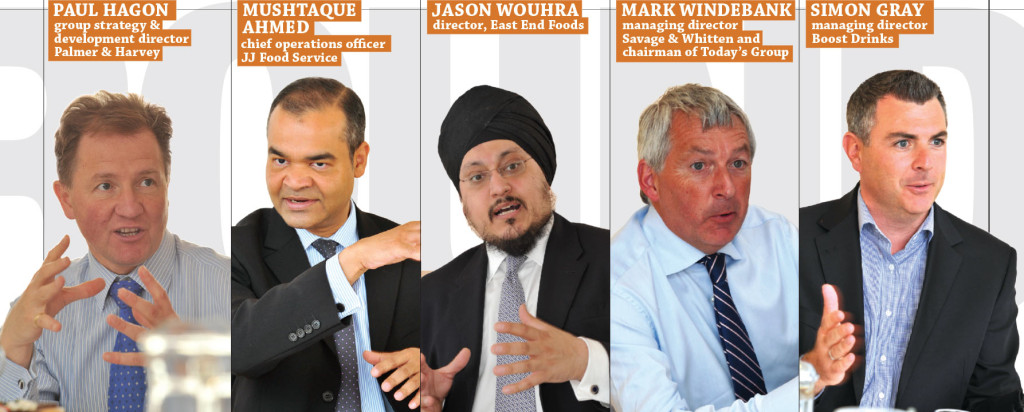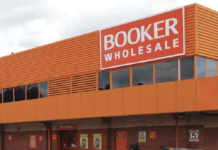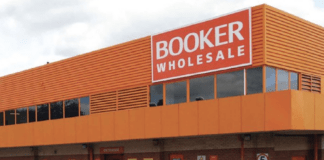In part two of our Summer Roundtable, wholesalers and suppliers outline the biggest opportunities and the barriers to growing category sales.
BW: What’s the biggest barrier to category sales growth?
Simon: We all know that there are a handful of products delivering the majority of category value, but we still see a lot of cheap product coming from overseas.
Mark W: Our biggest challenge is developing a chilled and fresh range. We have 95 Today’s Group symbol stores and almost 40% of sales from these stores are from chilled and fresh, up from 20% four years ago, and it’s growing.
Stefan: Why do you think it’s growing so fast?
Mark W: People are buying for ‘tonight’s meal’ and want fresh, healthy options. We have an EPoS solution that we bought from Dee Bee, which we’ve rolled out to 40 stores. We share the information with our customers and have seen a good uplift.
Elit: Is this something that can be rolled out on a larger scale with other members?
Mark W: We are hoping that Thames Cash & Carry will come on board and we want to work with more wholesalers that see symbol as the future.
Jason: It’s a good idea to tie customers in with EPoS but consistent pricing is also critical to growing category sales. We want our customers coming in regularly, not for one-hit-wonders.
BW: How important is core ranging?
Mark W: The multiples look at sales per square foot. If you’re not doing that you’re not competing.
Jason: A big problem we have is brands moving in and out of the market – people think they’re getting a good deal but if it’s a lot cheaper there’s usually a reason. You don’t make profit until you’ve sold it. It’s important to get the good, better, best rule across to retailers.
Mushtaque: This is the point where we need to trust data over peoples’ opinions. Growing your category is about relying on facts rather than good relationships.
Mike: There is a good opportunity for wholesalers to offer impartial advice on core ranging – it would give them a strong point of difference.
Tommi: We already have a wholesale customer that offers a replenishment service to their 600 retail stores – they are the centre of expertise and help to decrease wastage.
Mark H: There is a lot of information out there about how to run the category, but everyone has a responsibility in what they recommend.
Simon: We’ve got 30% of chiller value from sports and energy but it gets less than 20% space. Everyone knows it but no one is doing anything about it.
Paul: There is a hierarchy of people that retailers will listen to on core ranging – it starts with their wholesalers but they are even more likely to listen to other retailers.
BW: Where do PMPs fit in to it all? Do they help?
Simon: Price-marks used to be used as promotional tools but now it’s different. They are here to stay but you can’t force them on to people.
Mark H: There are some wholesalers that want products to be price-marked all year round and other wholesalers say that they want both options. We get lots of different opinions and suppliers would benefit from the industry having a clear view of what role price-marked packs (PMPs) should play.
Paul: PMPs can cause a lot of complexity throughout the supply chain. It’s not just about price points – it’s also about different pack sizes. They’ve got a place in terms of price perception but have to be well managed.
Mushtaque: We wanted to make the customer feel comfortable that the price we charge them is going to be the same for a few months. But suppliers keep reducing pack sizes and charging the same. Who are we fooling here?
Paul: I walked into a pub the other day and bought a packet of crisps and it was empty! [He laughs]
Mushtaque: When suppliers launch different product sizes and formats, it creates a huge amount of work for us because we need to create separate product codes for each pack size. It can become very complicated and you can’t achieve the same visibility.
Paul: Another problem is that suppliers won’t tell you that a product is going out of stock until the last minute. We had a major soft drinks suppliers put a promotion on PMPs but our retailers still had a lot of the old stock left – they need to give us a chance to shift the first lot first!
Mark W: We don’t like having so many versions of the same product because we don’t have the space in our depots. The biggest cause of the falling down of service is changes to pack sizes – it creates real problems with availability.
BW: How can we better support our customers?
Paul: Retailers tell us they need a good range so we have 13,000 SKUs [stock-keeping units]. But how are you supposed to be competitive with so many suppliers? We need to be more educational with customers, particularly in foodservice, where smaller operators are thirsty for support.
Mushtaque: We support our foodservice customers with a digital platform
[FOODit] that puts their businesses online. The model is similar to Just Eat, but gives the restaurant owner visibility of customer data. We’ve invested a huge amount to make this a very affordable option.
Paul: Another challenge is caused by having too many promotions on at the same time – retailers go out of business because they run out of cash, not because they run out of profit. They buy in bulk because it was a ‘good deal’, but it just sits there gathering dust.
Mike: The cash & carry doesn’t help this situation – if you look at a promotional leaflet before Christmas, it can be 68-pages long!
Mark W: We helped our retailers cut back 5,000 SKUs into 500 by looking at what sells using EPoS. You have to show retailers how to use space.









